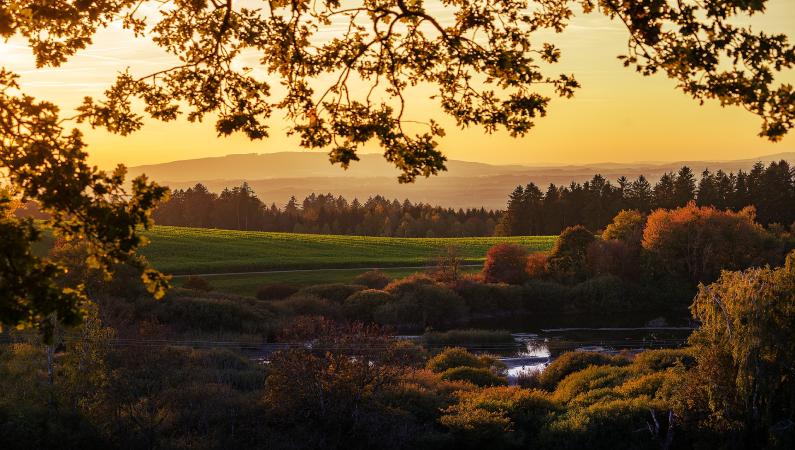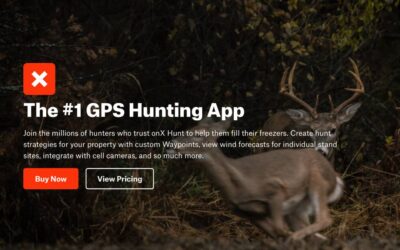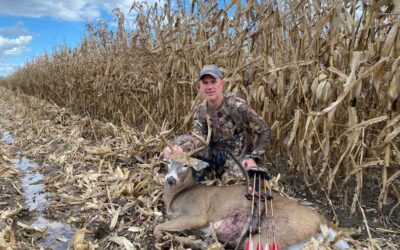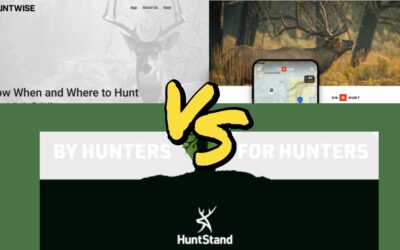Well planned hunting spot that will lead you to success in the woods can be hard to find.
However, I will show you how you can plan 3-5 successful hunting spots before the season begins.
Each spot will be unique and have certain pros and cons. It is up to you to decide when you should hunt each different spot.
I want to make this Loud and Clear. DO NOT sit somewhere if the wind is against you. This will only ruin your chances of shooting a deer and can even ruin your chances of seeing a mature buck.
Scent control and wind are the two biggest parts of deer hunting.
Here is a quick overview of the article in case you want to skip to a specific section. I understand that many hunters have perfected aspects of a hunting property but maybe not all the aspects.
- Early Season Summer Patterns
- The Water
- The Transition Areas
- Buck Rubs and Scrapes
- The Late Season Survivors
Early Season Summer Patterns Hunting Spots
Hunting spots during the early season can be easier to find because of all the scouting you have done during the summer. Trail cameras also act as a reliable source of information throughout the summer and early October.
The 3 keys to early-season summer patterns that will be great hunting spots are
- Food Sources
- Travel
- Bedding
Food Sources
Food sources will change and the year changes. During the beginning of the year, deer will be eating lots of proteins. This helps them focus on growing their antlers (for bucks), feeding their fawns (for does), and strengthening their body.
Food such as soybeans, woodie brows, acorns, and alfalfa.
Find the food source that they are eating the most, and you can set up a hunting spot on the edge of the woods or in the middle of the food.
Travel Paths
Travel paths are never perfect. Deer will use a path but maybe not the same every time. However, over time, the path will become noticeable.
Use that to your advantage. If you see a path with many deer tracks going up and down it, that is a good location to set up a hunting spot.
Be careful how close you get to the trail. I always like to be roughly 10 yards away from where I think the deer will travel. This allows me some wiggle room. Plus, a shot at 5 yards in a tree stand is harder than it sounds.
Bedding Areas
Bedding areas are a great place to be… if you can get in undetected. If not, well you might be better off letting them have their place to sleep.
Deer are smart and they tend to bed in places where they can see danger from one way and smell it from the other. So, how do you hunt over a bedding area?
You need to sneak into your hunting spot before daylight. Deer will most likely be feeding throughout the night. If you can get in before they are back to their bedding areas, then you will have a good shot of shooting a deer.
Bachelor Groups
During the summer and early summer patterns, bucks tend to travel in what is called “bachelor groups.”
A bachelor group is a group of bucks that do not yet feel the need to fight each other over hot does, so they travel together. This will help you to plan hunting spots because of the signs they leave behind.
You should look for groups of bigger dear tracks on a high deer traffic path. These paths tend to be from bedding areas to food sources. These paths can be extremely useful all year long; however, during the early hunting season, the deer are more likely to consistently use these paths.
So, look for bachelor groups on your property and how they travel your property. Also, look for trails that are heavily traveled by all deer in the summer because this will most likely convert to the early hunting season as well.
Water Sources
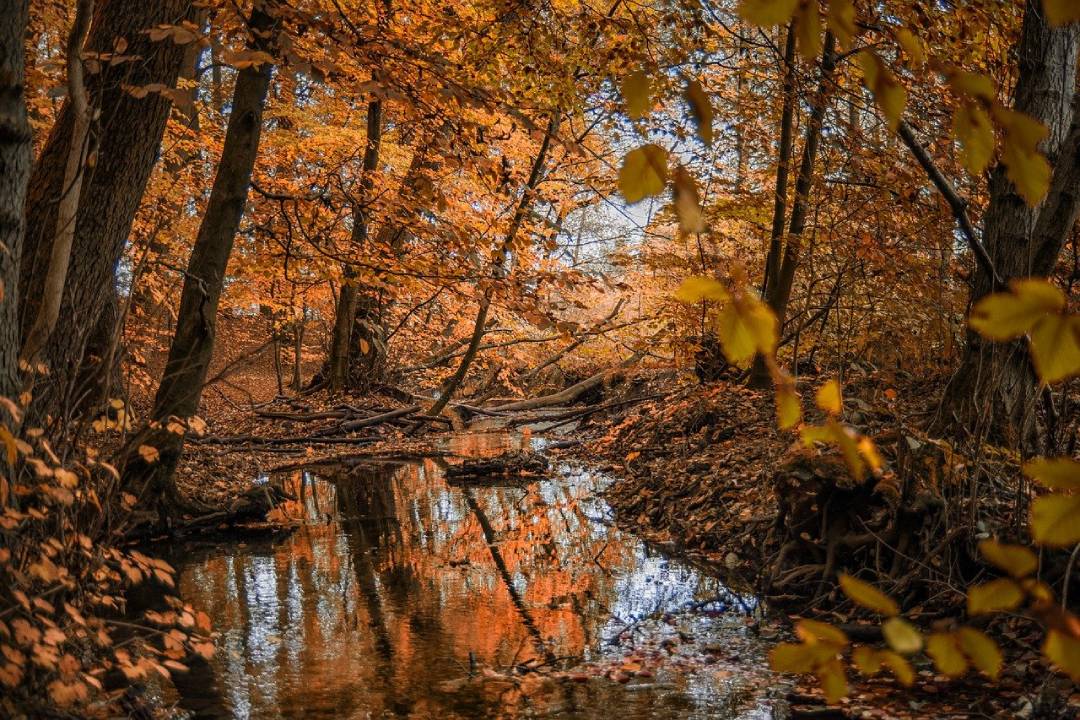
Water sources can be great spots to hunt all year round. They are a constant resource that deer need throughout the year to survive.
The best part is that if you are super serious about whitetail deer hunting, you can have a water source put on your hunting property.
The best types of water for deer hunting are ponds. For some reason that I do not understand, deer like stagnant ponds and overall flowing water sources.
If you can identify a quality water source, it is worth having a hunting spot near it. Just make sure you can make your shot if the deer are drinking.
You do not want to hope that the deer will be done drinking and then just magically walk in your direction.
It is worth noting that post rut and even during the rut, water sources can be a great place to catch tired bucks that are worn down from the rut. Meaning that they will be easier to harvest with their guard down.
Transition Areas
Transition areas are similar to travel paths; yet, they do have one slight difference. Travel paths tend to just get from A to B. Transition areas are more like A to B, check that it is safe, to C.
They are just an extra step in their movement to ensure the deer’s safety.
You can identify a transition area by seeing lots of deer tracks and maybe some paths, but not seeing deer beds or a food source that would hold them there.
This kind of hunting spot is kind of like a puzzle you need to piece together and is unique for each individual property.
Transition hunting spots are great for the pe-rut and rut and deer are looking for a hot doe. They will cruise through these transition areas and scent checks them to see if there is a hot doe in the area.
Transition areas are a bit harder to explain but this YouTube video of a buck named Curly can show you exactly how to transition areas can be hunted.
Buck Rubs and Buck Scrapes
Buck rubs and scrapes are a crucial piece of figuring out any buck. They can also be great places for a hunting spot at the right time of the year.
Buck scrapes tend to be used more year-round than rubs. Yet, the activity on scrapes does pick up during the rut.
Buck scrapes that are on the edge of the woods are slightly less significant than the ones that are inside the woods. It is a good idea to pair hunting over a food source and a scrape during the early season. But, once the rut hits, start to hunt over the scrapes that are in the woods.
Buck rubs are more directly related to the pre-rut. The majority of rubs that leave significant damage to a tree are made during the last week of October through the first week of November. (Midwest Pre-Rut)
I wouldn’t necessarily hunt over one specific rub because one rub does not tell you much about a buck and where he is traveling. Rather, I like to use many rubs that are in a core area to identify where a mature buck might be bedding.
You can also look for rub lines which are just a series of rubs that a buck makes while he is traveling.
These signs that bucks leave behind are not accidental and can be a worthy place for one of your hunting spots.
Plan Hunting Spots for Late Season
The late season is similar to early season hunting spots. They can be predictable and more easily patterned.
You need to look for where the food is located. Winter food sources tend to be higher in fats. This allows the deer to put on a nice heavy coat of fat to help them stay warm during the harsh winter months.
The other notable aspect of late-season deer hunting spots is warth. Many deer like to find places that are warm during the winter. A great place to look for deer that want warmth is in a group of pine trees.
The darkness of these pine trees absorbs sunlight and will give the deer increased warmth for the winter.
Conclusion
Planning hunting spots before the season can be difficult, especially during the rut and late season. However, if you can observe the deer movement via scouting or trail cameras, then you will have a good start in figuring out where the best hunting spots are located.
Once you have located specific hunting areas that you see value in, you now need to prepare these hunting spots by clearing shooting lanes and thinking about entry and exit plans for each hunting spot.
Thank you for visiting The Whitetail Teacher! If you enjoyed this post, make sure to share it with a friend.
If you have any questions or recommendations for new blog posts, please use the contact form.
Learn, Plan, Execute,
The Whitetail Teacher

